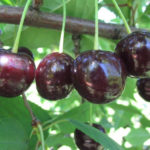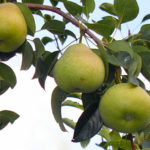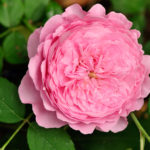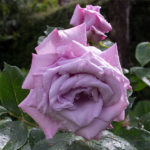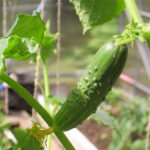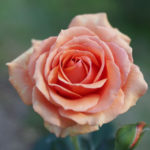Thuja western Reingold
Ornamental conifers with brightly colored needles fit perfectly into the design of a garden, park or local area. This is because they play the role of accent cultures to which you immediately turn your attention. One such evergreen shrub is Thuja western Reingold (Thuja occidentalis Rheingold). Having once made a choice in its favor, in the future you will not resist the temptation to expand your collection of conifers at the expense of this wonderful plant.
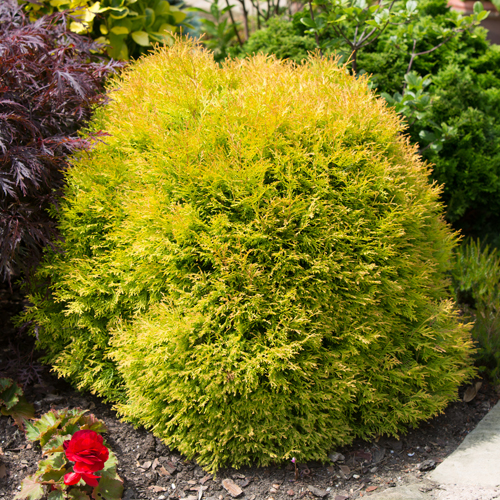
History and description of the variety
Thuja Reingold is originally from Germany. There, this variety was bred in 1900. Today, it is not only extremely popular all over the world, but also has significant decorative value. This is easy to explain: our heroine has a very effective appearance. The undersized shrub is formed by thin, soft shoots covered with needles: acicular in young specimens and scaly in adults. The shape of the crown of a culture also changes with age. In a young plant, it is spherical, rounded or cushion-shaped, in a more mature conifer, it is ovoid or broad-conical. The older the ephedra becomes, the more density its crown acquires. Young twigs of the plant have a pleasant pink color. Over time, the smooth bark covering them turns red-brown, and then gray-brown, and begins to flake off in stripes. The color of the needles is light golden yellow throughout most of the year. This is exactly what is reflected in the name of the culture: the German word “Rheingold "is translated into Russian as" Golden rain ". An admixture of pink and orange colors is allowed. Only in winter does the color of the scales turn brownish, causing associations with bronze dusting.
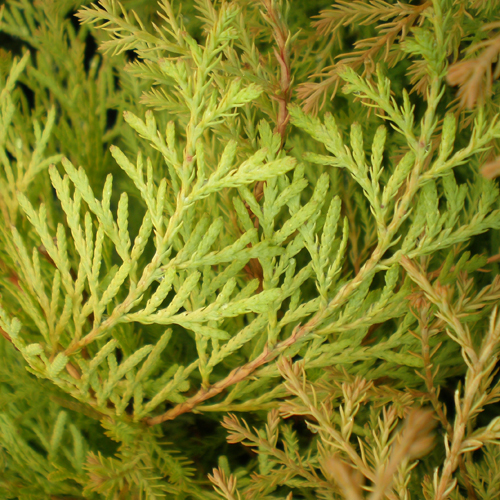
The shrub belongs to the slow-growing varieties of thuja. In a year, its size increases only by 10 cm. As a result, the maximum height of an adult plant is 3 m, and at the age of 10 - only 100 cm. The coniferous culture has a powerful and at the same time compact root system. Entering the fruiting phase, Reingold acquires rounded brownish cones up to 70 mm in diameter. This variety has one interesting feature: its needles tend to die off and fall to the ground once every 3-4 years. The advantage of an evergreen shrub is its durability: in one place the beauty grows for about two centuries.
The Reingold variety has a high frost resistance, which many plants can envy: ephedra shoots do not freeze when the temperature drops to minus 40 ºС. It is also distinguished by good immunity to diseases, quick adaptation to the conditions of an urban environment polluted with chemical impurities and exhaust gases.
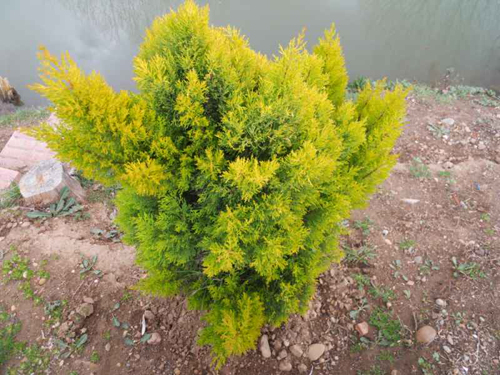
Features of agricultural technology
For golden thuja, you should choose a sunny place or an area located in partial shade. If you plant a plant in a shady corner of the garden, its needles will lose their shine, brightness of colors and natural density. The culture haven must be protected from cold drafts. The variety also places high demands on the soil. It is recommended to plant it in a soil characterized by a high degree of fertility, looseness and moderate humidity. It is important to maintain the pH of the substrate at a level of 4.5-6. The shrub does not tolerate drought, all the more prolonged, since this negatively affects the beauty of the golden crown, provoking the thinning of the latter. For this reason, the ephedra needs regular abundant watering and sprinkling. Moistening of the soil under a young plant in the summer is carried out up to 2 times a week.
It is not necessary to specially feed the ephedra - it is enough to add 500 g of nitroammophoska into the hole when planting. The soil under the bushes needs to be loosened a couple of times a month.This procedure is carried out strictly after watering and is performed with due care. At the end, cover the area of the trunk circle with mulch: wood chips or peat.
Ephedra is shown annual spring pruning. It consists in removing dry and damaged shoots. In addition, when cultivating a spectacular hedge crop, it is important to trim moderately during the warmer months.
Use cases
The thuja western Rheingold variety is used not only for the design of the already mentioned hedges, from which unusually beautiful natural fences or an excellent means for dividing the territory into zones are obtained. An evergreen crop with bright needles also looks great in single, group plantings, mixborders and tree-shrub garden compositions. It is widely grown in containers that can add a special atmosphere to a terrace, balcony or gazebo. The plant looks good in rockeries, harmoniously combined with decorative flowering perennials.
